Building
Design
Strategy
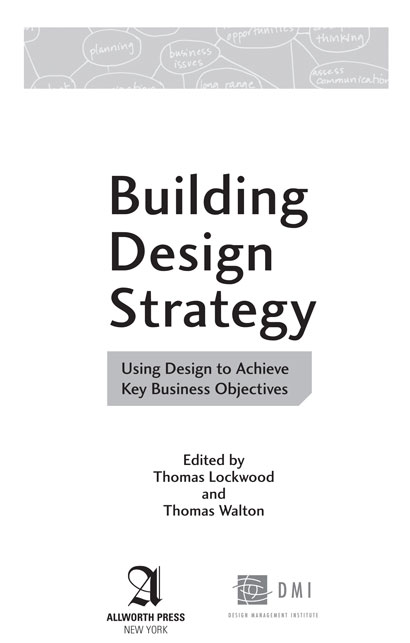
2008 Thomas Lockwood, Thomas Walton, and the Design Management Institute
All rights reserved. Copyright under Berne Copyright Convention, Universal Copyright
Convention, and Pan-American Copyright Convention. No part of this book may
be reproduced, stored in a retrieval system, or transmitted in any form, or by any
means, electronic, mechanical, photocopying, recording, or otherwise, without prior
permission of the publisher.
12 11 10 09 08 5 4 3 2 1
Published by Allworth Press
An imprint of Allworth Communications, Inc.
10 East 23rd Street, New York, NY 10010
Cover design by Continuum
Interior design by The Roberts Group
Page composition/typography by SR Desktop Services
ISBN-13: 978-1-58115-653-9
ISBN-10: 1-58115-653-7
eBook ISBN 978-1-58115-757-4
Library of Congress Cataloging-in-Publication Data
Building design strategy : using design to achieve key business objectives/edited by Thomas Lockwood.
p. cm.
ISBN-13: 978-1-58115-653-9
ISBN-10: 1-58115-653-7
1. Design, Industrial. 2. Industrial design coordination.
I. Lockwood, Thomas.
TS171.4.B85 2008
658.4'03dc22
2008034920
Printed in the United States of America
DEDICATION
This book is dedicated to all of the DMI members and
stakeholders around the world that have supported
the Institute since its founding in 1975.
Contents
Acknowledgments
I am grateful to all of the authors whose work is included in this book. In addition, I would like to acknowledge and thank all of the other authors who have contributed articles to DMIs Design Management Journal and Design Management Review publications over the years: They have made this body of knowledge the most extensive resource on design management in the world. I must especially credit the outstanding work of the former president of DMI, Mr. Earl Powell, PhD (hon), who not only founded these publications and served as their publisher but was also responsible for their content since the beginning in 1985. His efforts have increased our understanding and advanced the role of design in business immensely. And finally we must thank Dr. Thomas Walton, PhD, for his outstanding work as the editor of the Design Management Journal and Design Management Review, also since their inception. Dr. Walton has reviewed every article published and has opened every issue with his well-known and informative Editors Notes. Without their hard work, commitment, and significant contributions over the years, this anthology would simply not be possible.
Introduction
The problem with communication is the illusion it has occurred.
George Bernard Shaw
ONE OF THE most interesting things about this book is its titlethe reason being, there are about as many different opinions of the definition of design as there are for strategy. Nonetheless, we know that design strategy is important, and that if you want to bring true value to a corporation, design strategy is one of the best possible ways to do so. Lets take a look at what this involves by looking into those definitions.
DESIGN AS A PROCESS
According to Websters, one of the broad definitions of design is along the lines of a plan to make something. This is actually quite informative when you really think about it, because the key words are plan, make, and something. Today there is much discussion in the design community and in the business and design press regarding the idea of design thinking. This, too, is hard to define, but a general idea would involve a deep understanding that would help identify challenges and frame opportunities (in other words, plan) in order to create (make) new solutions (something). Generally this entails observational or ethnographic research, visualization of ideas, and rapid iteration of prototypesall techniques very common to the design practitioner but relatively new to the business manager or executive. I once heard Steve Jobs referenced at Pixar Animation Studios as saying that the goal is to fail as quickly as possible, so that a better solution can be rapidly explored. This is an example of using design and design thinking as a business process, and it is an integral part of Pixars strategy. Our argument is that design strategy is not only a relevant business process but in fact can also be a key advantage for businesses.
DESIGN AS AN ARTIFACT AND SERVICE
Equally important, design represents an outcome, as an artifact or service. This also is very broad. Charles Eames was once asked, What are the boundaries of design? and his answer was What are the boundaries of problems? In effect, designs range and ability to solve problems is immense. Consider that everything ever made by human beings required design. To simplify this into categories, many would agree that there are traditionally four main types of design as an outcome: product, communication, interface/information, and environment.
 Product design. Products are generally the most visible aspect of a company. They are often how we know the company, and they drive our attitudes toward it as well.
Product design. Products are generally the most visible aspect of a company. They are often how we know the company, and they drive our attitudes toward it as well.
 Communication design. Equally important, communication design affects all touch-points that rely on visual communicationsfrom symbols and corporate identity to packaging, advertising, instructions, and directions. Consider the impact of election ballots, for example: The importance of communication design cannot be underestimated.
Communication design. Equally important, communication design affects all touch-points that rely on visual communicationsfrom symbols and corporate identity to packaging, advertising, instructions, and directions. Consider the impact of election ballots, for example: The importance of communication design cannot be underestimated.
 Information design. We have all come to rely on the importance and functionality of information design, from Web interfaces to product interfaces, from signage to wayfinding, from information architecture to managing our bank accounts. Without information design, our society could not function.
Information design. We have all come to rely on the importance and functionality of information design, from Web interfaces to product interfaces, from signage to wayfinding, from information architecture to managing our bank accounts. Without information design, our society could not function.
 Environment design. Affecting everything from branded retail environments to showrooms, from exhibitions to our workspaces, from business architecture to that of our homes, the design of our environments can be extremely influential in our professional as well as our personal lives.
Environment design. Affecting everything from branded retail environments to showrooms, from exhibitions to our workspaces, from business architecture to that of our homes, the design of our environments can be extremely influential in our professional as well as our personal lives.
I would like to add a fifth category to these four: service design.
 Service design. This is emerging as a discipline unto itself. Consider that all services, from bank-teller processes to restaurants, from hospitals to governments, from hotels to travel carriers, are designed. The question is whether they are well designed or simply a reflection of the status quo.
Service design. This is emerging as a discipline unto itself. Consider that all services, from bank-teller processes to restaurants, from hospitals to governments, from hotels to travel carriers, are designed. The question is whether they are well designed or simply a reflection of the status quo.
STRATEGY AS A WAY TO ACCOMPLISH OBJECTIVES
Here, too, we find a rather broad interpretation of strategy. Websters would define the word as a careful plan or method or as the art of devising or employing plans. Its not too difficult to see the similarities between design and strategy; however, in todays typical large corporation, the strategy department and the design department are most likely worlds apart. As Hartmut Esslinger, the founder of renowned Frog Design, recently noted, Businesspeople are from Mars, and designers are from Venus. While this may be not too far from the truth, our challenge in building design strategy is to bring these two disparate worlds into alignment. They share a common ground in the desire to accomplish business objectives. So the strategist and the designer, each with a clear understanding of business goals and objectives, can be a powerful force by working together. No one really expects the strategist to become a designer, but its not so unlikely that the designer will start strategizing. This is precisely one of the roles of design management: to bring design and design thinking into organizations, in support of the development of corporate strategy.
Next page

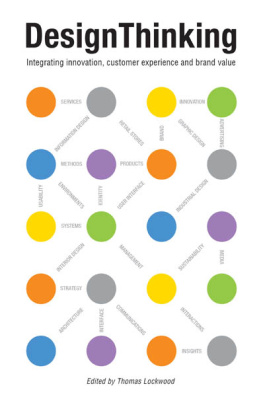
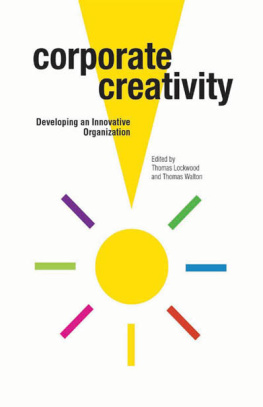

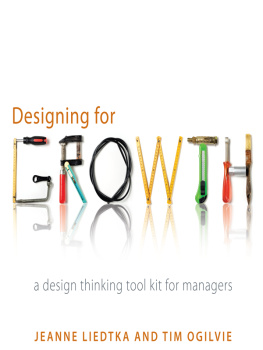


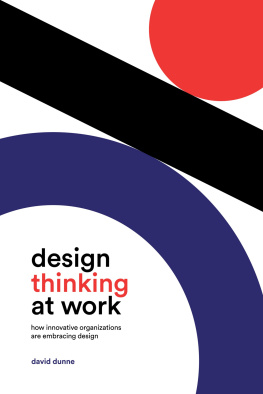
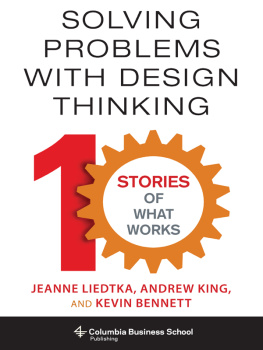
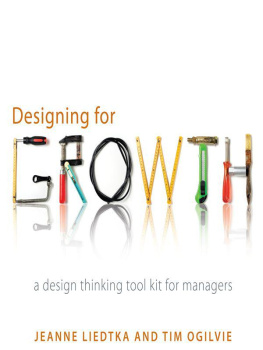

 Product design. Products are generally the most visible aspect of a company. They are often how we know the company, and they drive our attitudes toward it as well.
Product design. Products are generally the most visible aspect of a company. They are often how we know the company, and they drive our attitudes toward it as well.